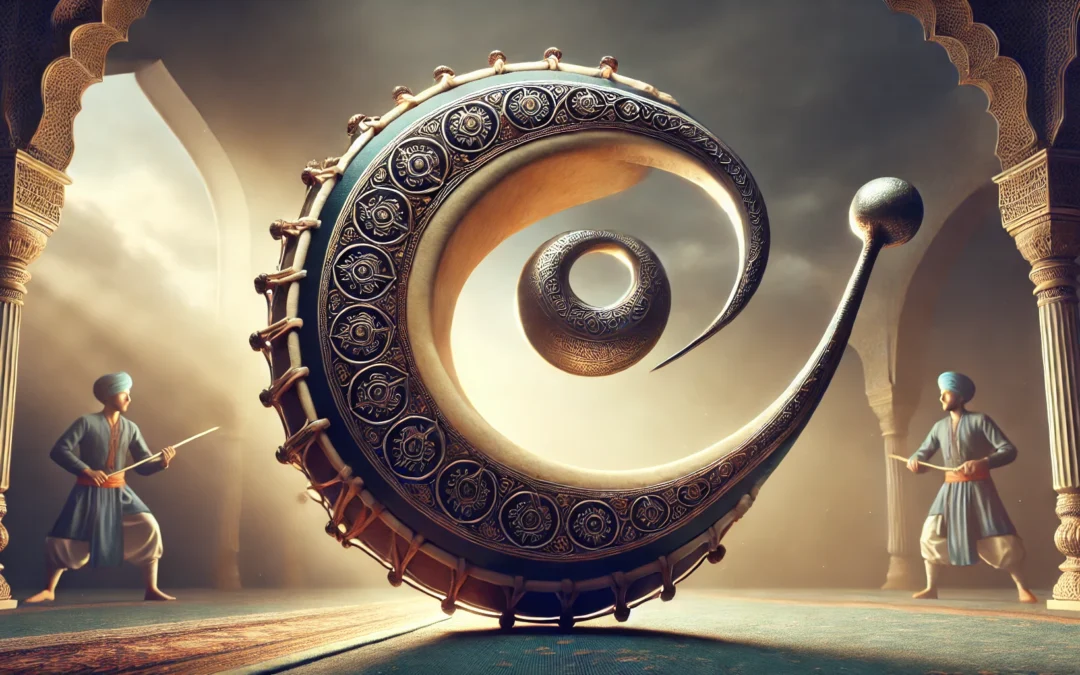The exquisite scimitar drum is a mix of hand craftsmanship and contemporary technology. This drum has its origins in Middle-Eastern cultures and the promise of not just a unique hearing experience but possible profitable aspects to both investors or musicians. This blog will detail the history of a scimitar drum, how they are made and where it stands in the music industry today financially wise – as well as which far corners of what niche to find prospective buyers.
The Background and Building of the Scimitar Drum
Historical Background
Inspired by the scimitar or curved sword, the Arabic heritage represented in Middle Eastern music offers a unique palette of tones and textures with poignant melodic percussion for an uncommon sound effect known as the Scimitar Drum. These drums were used historically in ceremonies and celebrations, demonstrating the rhythms and melodies of the area.
Construction and Materials
The full list of drums in the Scimitar range are made from a number of different materials, typically wood with metal and animal skins involved. More modern iterations often blend synthetic components to increase durability and improve sound quality. The air pressure changes producing these sounds is crucial to how timpani works: the drumhead — usually made from goatskin, although synthetic alternatives are becoming widely available — flutters across a rounded body.
Artisans regularly decorate the drum in a style that embellishes their cultural heritage, and incorporates features to make them appear much more aesthetically engaging. There is a masterpiece in every scimitar crafted with the handiwork and creativity of one maker.
Modern songs with the Scimitar Drum
Contemporary Musicians Using the Technology
Of late the scimitar drum has become a favorite of musicians who wish to merge traditional sounds with modern music. This has given a distinctive timbre and overtones making it an invaluable addition to many diverse musical genres like world music, jazz as well even electronic dance music. Artists like Hossam Ramzy have included the scimitar drum as part of their performance, showing what was possible with this sound and helping to expand on it musically.
Performance Techniques
There are multiple ways musicians can play the scimitar drum, from traditional hand-drumming techniques to more out-of-the-box styles allowed for by its ergonomic design. This range gives the drum its ability to play both deep bass tones and sharp, high-pitched slaps in rapid succession that are a necessity for live performances as well recording.
The Scimitar Drum- A Financial Gibbet
Investing in Uncommon Instruments
This music investment market is great for investing in the most scarce and exotic instruments such as scimitar drum. Instruments of high monetary and social value to collectors and musicians, some are willing to pay vast sums claiming it worth every penny so long as they get what they want. High-quality scimitar drums are handcrafted and available in limited quantities, which contributes to their market price looking like a possible investment.
Market Demand and Challenges
Although the scimitar drum is slowly but surely being more widely recognized it still stands as a niche. A key challenge is the existence of extremely high-quality instruments, for which bespoke work and materials are required. That exclusiveness is equally an asset however as it raises the drum’s appreciation and value in both collectible circles, or among pro musicians.
Use Cases: Integrate Successfully
This has extended to bands like Secret Tribe who have successfully melded the scimitar drum into their sound with complex and intricate layered rhythms that catch the ears of a wide range of non-trained musical enthusiasts. These case studies demonstrate the drum’s capacity to transcend its historical use and reposition itself as a commodity in popular music, reinforcing consumer demand for it.
Respecting Tradition, Engaging in Innovation
Workshops and Seminars
Programs to uphold the cultural heritage of scimitar drum include workshops and seminars on working techniques in which artisans can exchange experience with musicians. By effort such as these the art of creating and playing on this scimitar drum is kept alive, continuing to fulfill its original role in culture while pushing forward into new musical realms.
Future Opportunities
Nonetheless, the scimitar drum seems to have a future with an interest in blending music styles and cultural preservation. Increasingly more itself, the likelihood of even higher demand and market value for this drum is there.
If this is combined with an artist collaboration between traditional artists and modern musicians, the drum may further develop appealing to remain an instrument of high demand in today’s world music scene.
Also Read: Yotsuba Stock Exchange: A Comprehensive Overview
Conclusion
It also acts as a symbol of their cultural heritage and contemporary invention that the scimitar drum does offer to its followers! A distinctive build, a long historical past and different sound all conspire to make it in as much of interest on the part related to musicians simply because your collectors. With rare and exotic instruments becoming more marketable than ever, the scimitar drum poised a unique financial opportunity in creative expression with fiscal gains. Adopting this instrument means keeping cultural traditions alive and expanding your musical horizons, a valuable addition to any kind of music man focuses.

